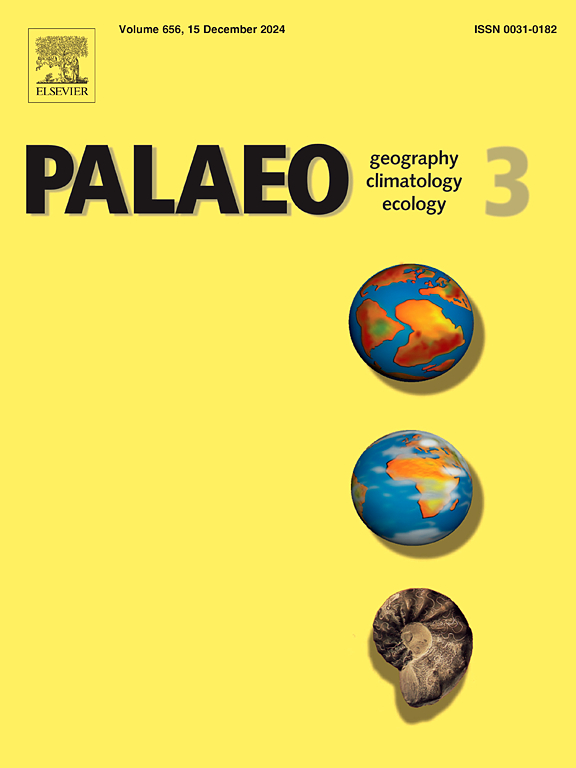Early-Middle Holocene climate change and its impact on the succession of Neolithic cultures in southern Hangzhou Bay
IF 2.6
2区 地球科学
Q2 GEOGRAPHY, PHYSICAL
Palaeogeography, Palaeoclimatology, Palaeoecology
Pub Date : 2025-02-01
DOI:10.1016/j.palaeo.2024.112652
引用次数: 0
Abstract
The Neolithic culture on the southern flank of Hangzhou Bay, in the lower Yangtze River, is among the earliest Neolithic cultures discovered in eastern China. However, the relationship between the early Neolithic cultural succession, climate change, and sea level fluctuations in this area requires further investigation due to the lack of precise high-resolution hydroclimatic records, particularly in the context of significant sea-level changes during the early Holocene. In this study, we present three high-resolution stalagmite δ13C and δ18O records from Shennong Cave in southeastern China, combined with other records and archaeological data, to examine the relationship between hydroclimatic changes and culture evolutions in the lower Yangtze River during the early and mid-Holocene. The findings indicate that the Shangshan culture was shaped by a combination of climate and sea-level changes, with regional hydroclimate exerting a greater influence than oceanic factors. A warm and humid climate allowed the Shangshan culture to thrive for nearly 1500 years, while its decline corresponds to a prolonged dry period between the 9.2 ka and the 8.2 ka events. Two major pluvial events occurred during the Kuahuqiao culture, from 8171 ± 31 to 7926 ± 47 yr BP and from 7291 ± 60 to 7038 ± 55 yr BP, with the latter coinciding with the culture's decline. Each pluvial event lasted nearly 240 years, supporting the hypothesis that flooding played a key role in the demise of the Kuahuqiao culture. The interruption between the early and late Hemudu culture may have been caused by flood events linked to a persistently wet climate. In the late Hemudu, frequent extreme flood and drought events, particularly the significant flooding event around 5425 ± 33 years BP, likely contributed to the decline of the Hemudu culture, coinciding with the 5.5 ka cooling event. While we do not stress climate determinism, our speleothem record offers a high-resolution account of climate change, providing valuable insights into the early and mid-Holocene Neolithic cultural evolution on the south bank of Hangzhou Bay.
求助全文
约1分钟内获得全文
求助全文
来源期刊
CiteScore
5.90
自引率
10.00%
发文量
398
审稿时长
3.8 months
期刊介绍:
Palaeogeography, Palaeoclimatology, Palaeoecology is an international medium for the publication of high quality and multidisciplinary, original studies and comprehensive reviews in the field of palaeo-environmental geology. The journal aims at bringing together data with global implications from research in the many different disciplines involved in palaeo-environmental investigations.
By cutting across the boundaries of established sciences, it provides an interdisciplinary forum where issues of general interest can be discussed.

 求助内容:
求助内容: 应助结果提醒方式:
应助结果提醒方式:


